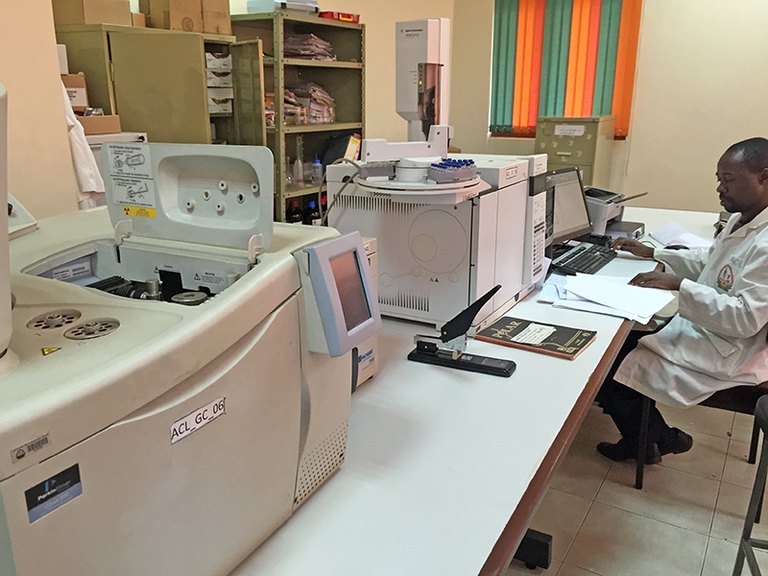Inter-departmental project “Aflanet”
In the inter-departmental project “Aflanet”, MRI scientists are building a German-Kenyan network of scientists, public and private organizations, as well as farmers to reduce aflatoxin in the food chain. Aflatoxins are carcinogenic toxins produced by fungi found on corn, nuts, dried fruit, and other foods. These toxins can occur anywhere in the world, yet they tend to thrive in hot and humid climates, putting tropical and subtropical countries at an elevated risk of food contamination. Worst hit are small farmers in underdeveloped regions, whose subsistence relies on their own production of corn and millet.
The project is coordinated by the Department of Safety and Quality of Cereals in Detmold, which developed an instant aflatoxin test using corn samples from Kenya. The idea was to create a test that is so easy to handle that African famers can administer it themselves. The food to be tested is ground, put in a container with a liquid extraction agent such as alcohol or water, and then shaken. The liquid is filtered and dripped onto a strip, which is inserted in a measuring device that shows the overall aflatoxin level within one minute.
The Department of Safety and Quality of Milk and Fish Products in Kiel studies critical contamination levels in animal feed and how they carry over into dairy products. Cows from the experimental station in Schädtbek near Kiel were given feed containing aflatoxin B1. Later, an analysis of their milk showed that in complete feedingstuffs, at normal levels of concentrated feed, the current critical aflatoxin level did not result in excessive levels of the toxin in the dairy product. The carry-over rate was two percent. Aflatoxin levels could be lowered by 25 percent by adding aflatoxin binder to the milk – a potential way to reduce the toxin, at least temporarily.
The Department of Safety and Quality of Fruit and Vegetables in Karlsruhe uses molecular-biological methods to study the factors that generate aflatoxin. They hope their insights will lead to a method to suppress the production of the toxin and optimise storage conditions. The goal is to develop a sort of heat map that shows high risk or presence of activated aflatoxins. The activation of genes can be measured using modern analytical methods such as microarray, real-time PCR or ddPCR technologies (Droplet Digital PCR). The researchers successfully developed a ddPCR-system to show the activity of a gene that controls the generation of aflatoxin (aflR). More ddPCR-systems are in the pipeline.
AflaNet - One-Day-Conference - Call for Abstracts
The organizers of the AflaNet project are announcing a conference to be held in Nairobi, Kenya. The aim of the conference is to bring together scientists, stakeholders, institutes, farmers and governmental institutions seeking for long-lasting, innovative and practicable ideas to combat Aflatoxin from the food value chain.
<link file:2283 download herunterladen der datei>Call for Abstracts (pdf)


